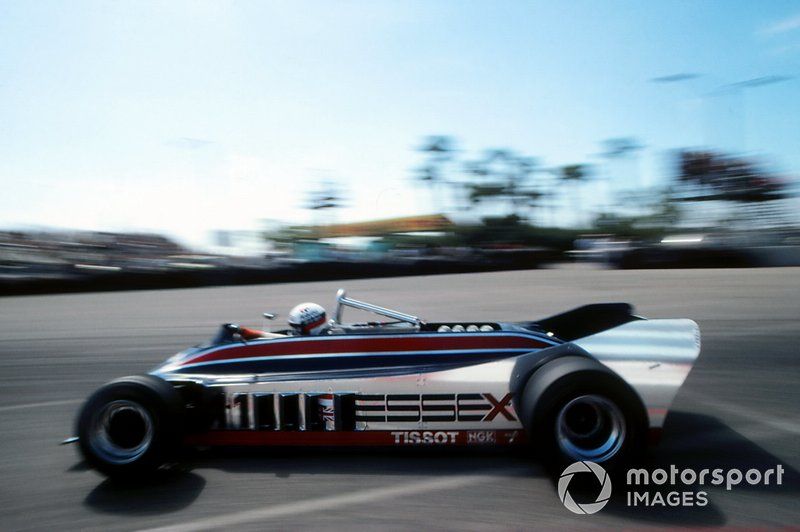Mercedes ultimately selected to finish its on-off relationship with its rear suspension package deal, first pressed into motion on its Method 1 automotive at Imola, on the Hungarian Grand Prix. Whereas not outwardly blamed for the workforce’s basic downturn in kind, the revised suspension was seen as an obtrusive factor in creating and understanding its W16 additional.
What’s identified is that the package deal was aimed toward decreasing the rear axle carry below load. The speculation in doing so is that the downward power on the rear tyres stays a lot steadier, and retains the underbody at a static degree to generate a constant degree of downforce.
The package deal was rolled out at Imola, then faraway from the automotive at Barcelona and Monaco, and reintroduced at Montreal. On the Canadian circuit, Mercedes took its first (and to this point, solely) win of the season due to George Russell’s starring flip within the Quebecois metropolis.
Mercedes’ trackside engineering director Andrew Shovlin contends that the Montreal circumstances masked a few of the stability points that grew to become obvious in latest races. This, arguably, extended the choice to desert it for good, till the workforce had determined to take it off the automotive on the Hungaroring.
Different groups – Ferrari and McLaren amongst them – have opted for a suspension package deal with clear anti-lift properties. Shovlin defined in Hungary that even designing a rear suspension package deal together with a brand new gearbox (which incorporates the arduous factors for suspension mountings) is inherently pushed by compromise – and this compromise is amplified by creating a brand new package deal for an current gearbox design.
“The truth is even when you’re designing a suspension and gearbox with a totally clean sheet of paper, it is a gigantic compromise between the place the aerodynamicists need to put all of the legs, the varied compliances, the kinematic traits, the place the roll centres are… and it’s inconceivable to truly set all the pieces precisely the place you need it to be,” Shovlin defined.
Andrew Shovlin, Mercedes
Photograph by: Sam Bloxham / LAT Photographs by way of Getty Photographs
“So the entire thing is a compromise, and that compromise is extra excessive while you’re doing it to an current gearbox and an current suspension – and the price cap means that you could’t simply rip all of it up and begin once more.
“The compromises that we’d have confronted may have been very totally different to those who Ferrari or McLaren had, so it is undoubtedly entering into the delicate element. McLaren have clearly made an amazing success of it, but it surely’s not tough to see how sure elements can catch you out.”
In F1’s earlier period, through which the flooring had been largely flat other than the diffuser on the tail finish, suspension layouts had been largely set in stone; groups typically operated with a push-rod entrance suspension and pull-rod rear structure.
The suspension packages themselves may very well be tweaked, with some later designs providing a point of flexibility at increased steering angles to maintain the automotive’s entrance finish low for rapid downforce retention, however this was maybe a small twist on an in any other case standard resolution.
Nonetheless, the ground-effect flooring are delicate and require constant experience heights to work throughout a spread of cornering circumstances. Though 1981’s Lotus 88 is (by fashionable requirements) a primitive instance of this, the calls for of sustaining the Venturi tunnels at a steady degree had been identified even again then. On this case, the ‘twin-chassis’ 88 had a softly sprung internal chassis, and the outer chassis containing the tunnels was stiffly sprung to make sure the ground-effect ground maintained a constant top.

Elio de Angelis, Lotus 88-Ford Cosworth
Photograph by: Sutton Photographs
The up to date anti-lift rear suspension route works to a not-dissimilar concept of maintaining the ground at a static experience top. Creating the aerodynamic interface of the ground solely produces marginal positive factors at this level, and thus groups have been eager to enterprise deeply into the kinematics concerned to make sure the flooring function at their peak for longer.
Shovlin defined that exterior components have additionally influenced the selections to enterprise extra into suspension growth, significantly as groups have been eager to take in their wind tunnel allowances with the incoming 2026 automobiles.
“I believe it is the extent of how far you push it, not a lot that numerous groups could effectively have had a proportion of anti-lift within the automotive, however what you can see that McLaren had been doing was pushing that extraordinarily arduous.
“The actual fact is that because the aerodynamic positive factors from the laws are beginning to dwindle. You are discovering smaller and smaller efficiency steps.
“The opposite reality is groups must shift their wind tunnels on to subsequent 12 months’s laws. I believe that naturally signifies that you begin trying in different areas that you could be not have explored as absolutely earlier than.
“What you will discover from the automobile dynamics aspect is it is logical that in the direction of the tip of a set of laws you begin trying in areas that you just may not have as a result of the traditional bread and butter of aero growth begins to dry up.”
Further reporting by Ronald Vording
On this article
Be the primary to know and subscribe for real-time information electronic mail updates on these matters


